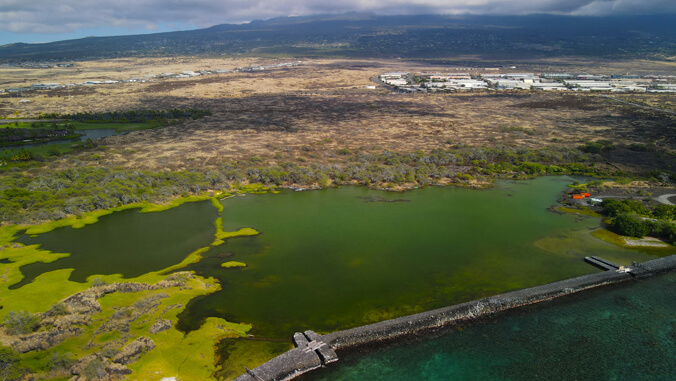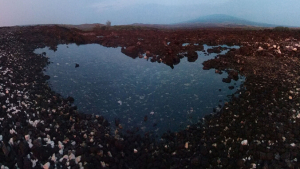
The social and cultural values of groundwater dependent ecosystems (GDEs) on the west coast of Hawaiʻi Island were described in a new article published in Ecology & Society by University of Hawaiʻi at Mānoa researchers.
Through interviews with 19 lineal descendants and resource managers, researchers discovered that GDEs have deep social and cultural value, in part because of their historical significance as a major water source and important role in food production systems for Kona.

Researchers also learned about significant threats to GDEs, including invasive species, sea-level rise, nutrient pollution, over use, reduced groundwater flow and urban development. Some threats can be addressed at the individual manager level, while others require policy action at the state and county levels.
One Kānaka ʻŌiwi lineal descendant said, “As with most of Hawaiʻi, our sacred and/or special places see more people, exposure, commodification and, at times, destruction. In today’s society of social media and Instagram celebrities, I see instances where people are willing to go to the extremes in order to ‘get the shot’ that will get them the most ‘likes’ even if they may not be aware of the negative impact they may be having on these places or people.”
Interviewees expressed visions of restoring GDEs for ecological and social functions, and emphasized that the restoration of cultural practice, well-being and identity is critical. They said managers continue to address the threats they have the most direct control over, for example, the presence of invasive guppies, but they also stressed the importance of shifting decision-making power to local resource managers and exploring models of community-based governance.
Interviewees also suggested limiting visitors to allow for “resting” of GDEs, and creating a fee system to fund docents for education and maintenance. To prepare for sea-level rise, others suggested allowing space for the creation of new GDEs inland.
“The Indigenous people of Kona have a long history of resilience and adaptation that is instrumental in successfully facing challenges in GDE management,” according to the researchers. “In the face of many interacting challenges, the Kona community is at the forefront of combining Indigenous knowledge and resource management practices with contemporary technology for GDE restoration. Supporting local resource managers, cultural practitioners and lineal descendants in achieving these goals through re-orienting governance and funding toward community-based management will be critical to the long-term ecological and social health of these important systems.”
The study’s authors are:
- Veronica Gibson, School of Life Sciences PhD candidate
- Leah Bremer, director of the Environmental Policy and Planning Group in the UH Economic Research Organization (UHERO) and Water Resources Research Center associate specialist
- Kimberly Burnett, UHERO associate director
- Celia Smith, School of Life Sciences professor
- Nicole Keakaonaaliʻi Lui, Hawaiʻi County Cultural Resource Commission and Hawaiʻi Community College graduate
UHERO is located in UH Mānoa’s College of Social Sciences. For more information, see UHERO’s website.

